Today we shall begin a photographic tour around the different weather vanes (or weathercocks) that garnish the top of Córdoba buildings. It is my believe that we have a tiny debt with these peculiar and forgotten items, thus, here comes a small tribute.
Córdoba is not a city known for its skyscrapers nor its high towers but it does have plenty of bell gables. There are many interesting examples: the Tower of the Cathedral (highest in the city), the beautiful hybrid tower of Saint Lorenzo’s church, the slim and hidden tower of Saint Andrés, or the twin towers of Saint Rafael. Whether we like it or not, it seems that Córdoba adopted the Renacentist custom of leaving things unfinished. Juts like in Granada’s Cathedral and in Malaga’s Cathedral (that is missing one of its towers), Córdoba has also plenty of unfinished towers. But that shall make for another article.
Even so, throughout the city there are thousands of old weathercocks crowning all sorts of buildings. It is true that the most common and used image in these items are roosters, but in this case it was very hard to find a single rooster in Córdoba. We have managed nonetheless to locate plenty of dogs and fishes: the symbols of Saint Rafael.
SOME WEATHERCOCKS OF CÓRDOBA
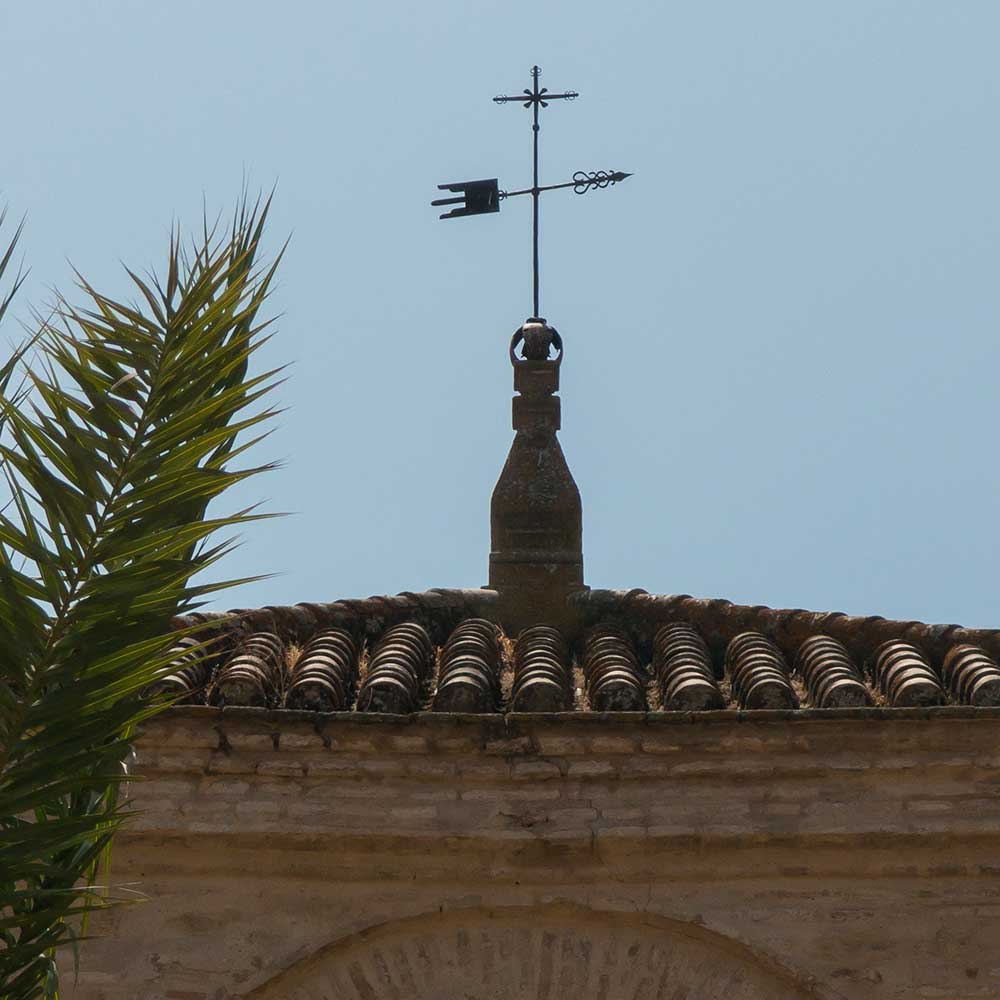
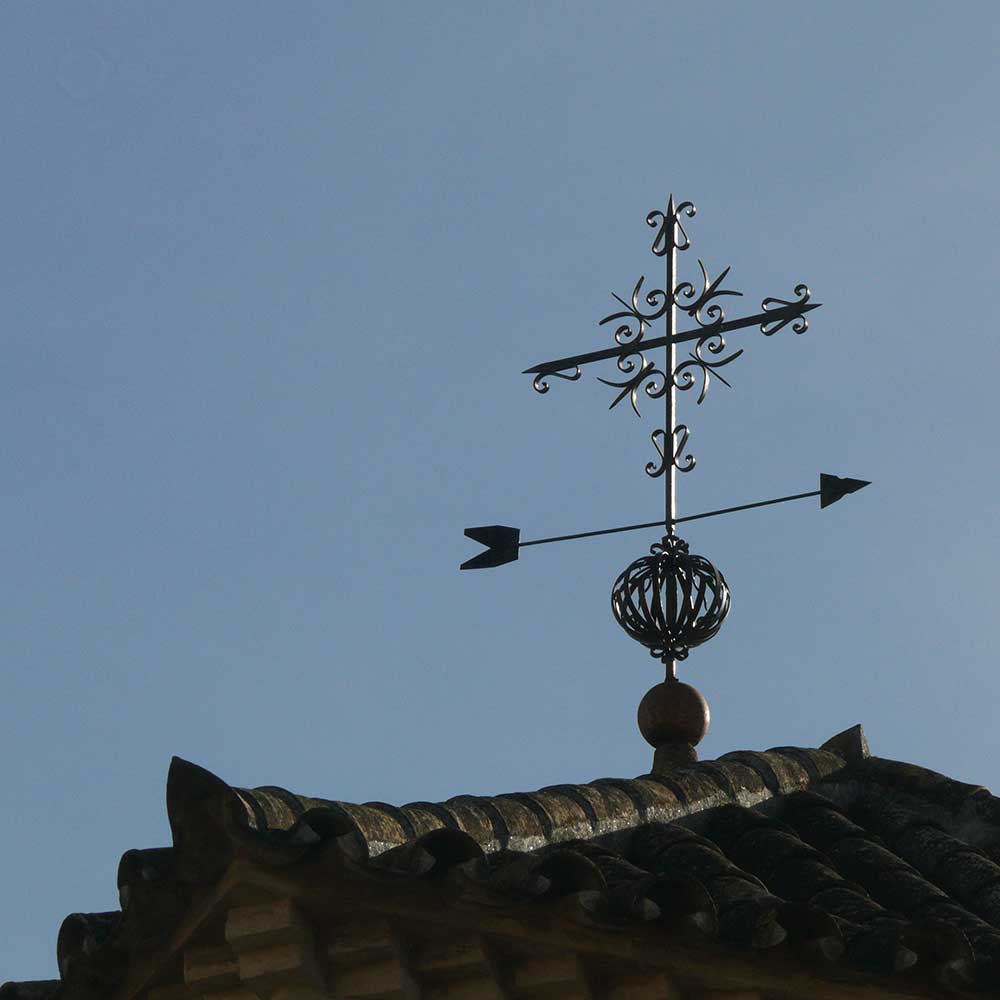
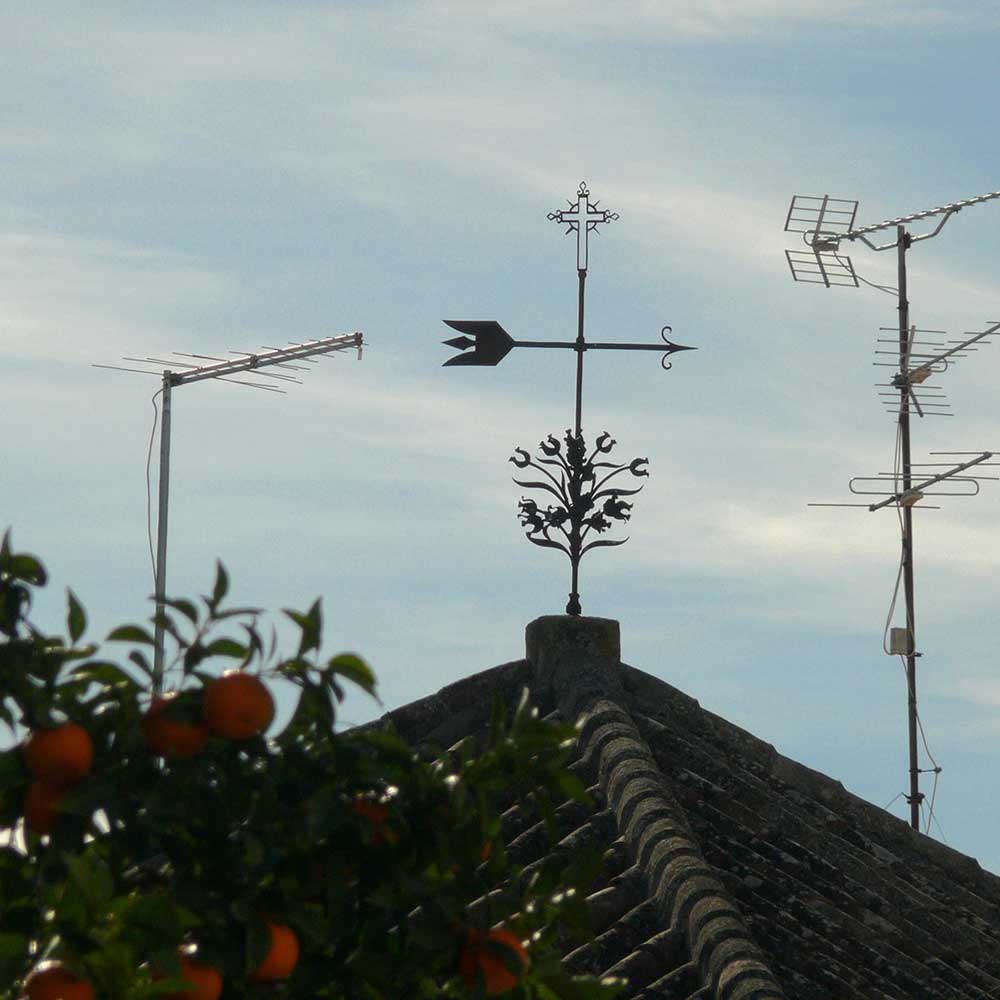
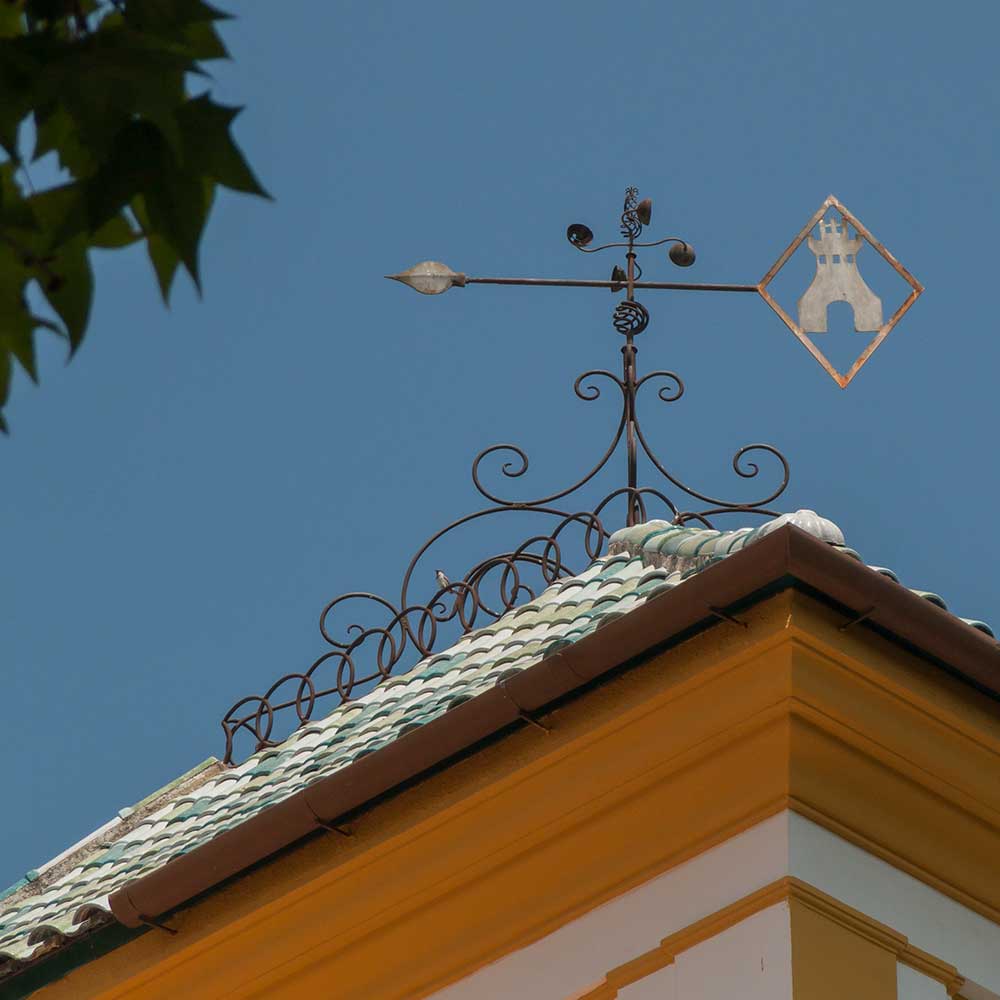

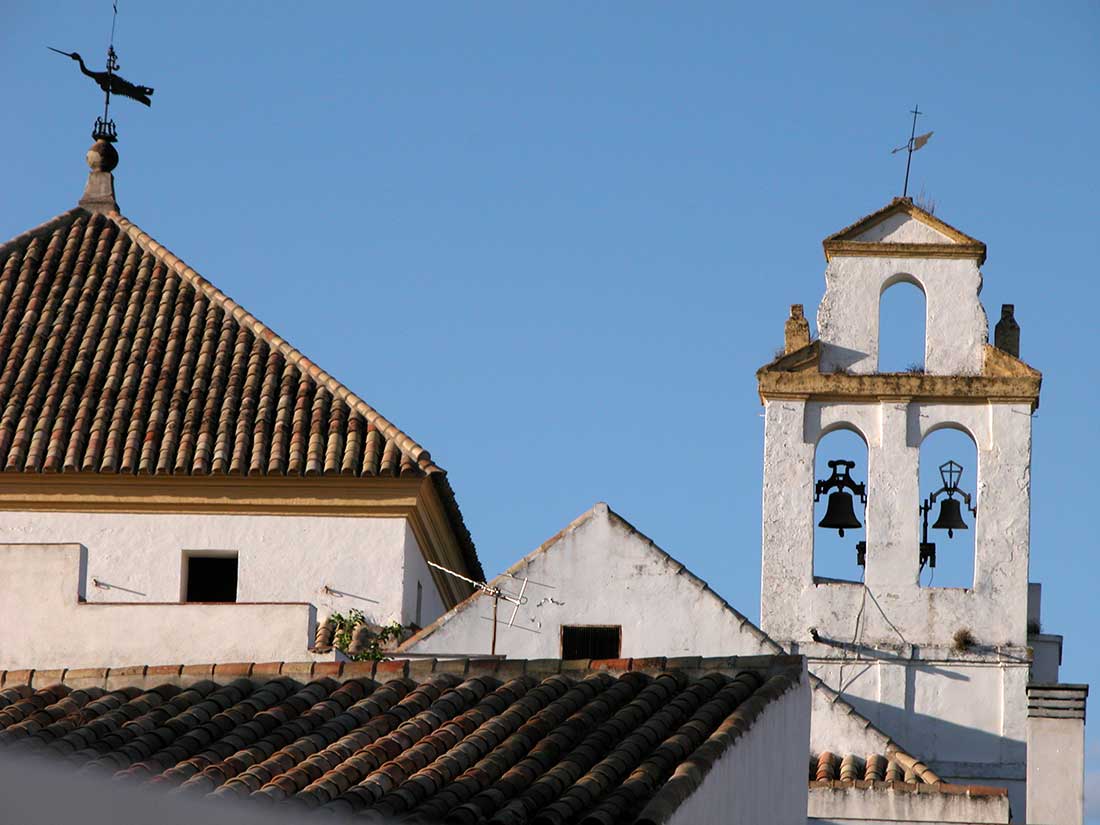
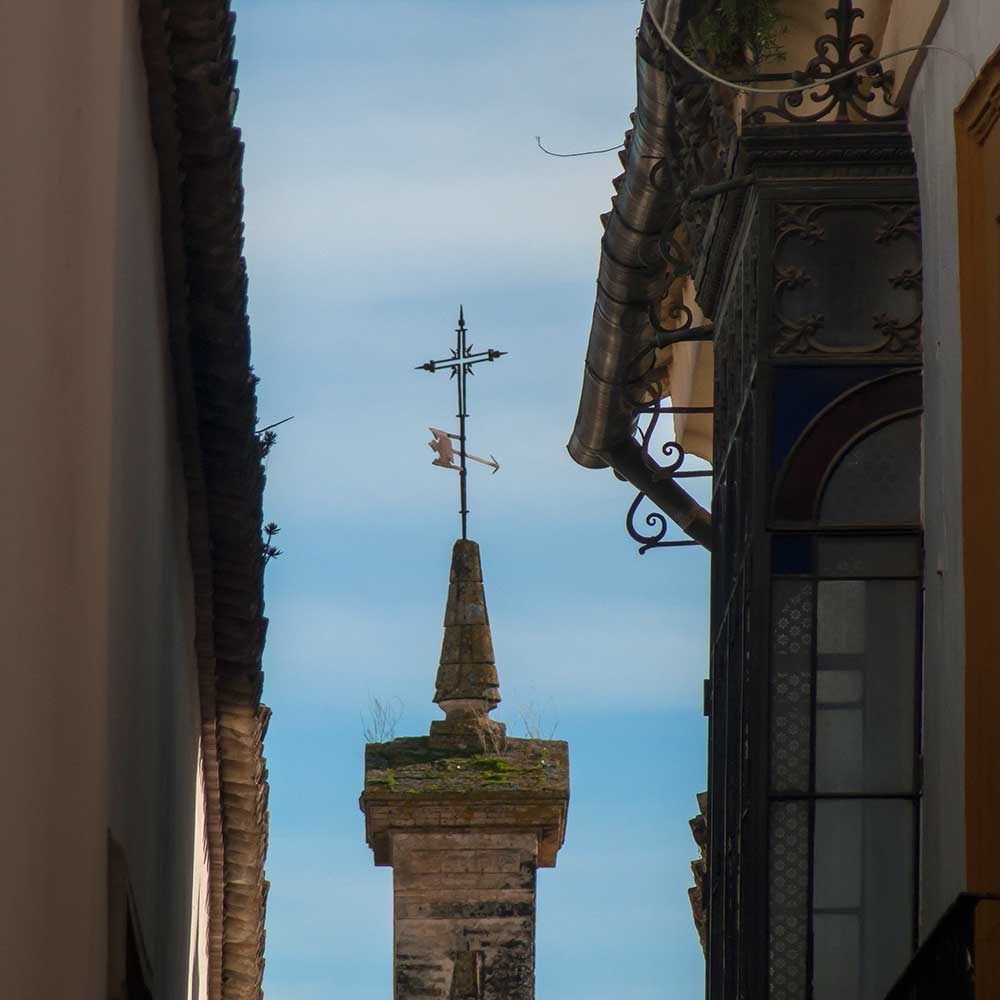
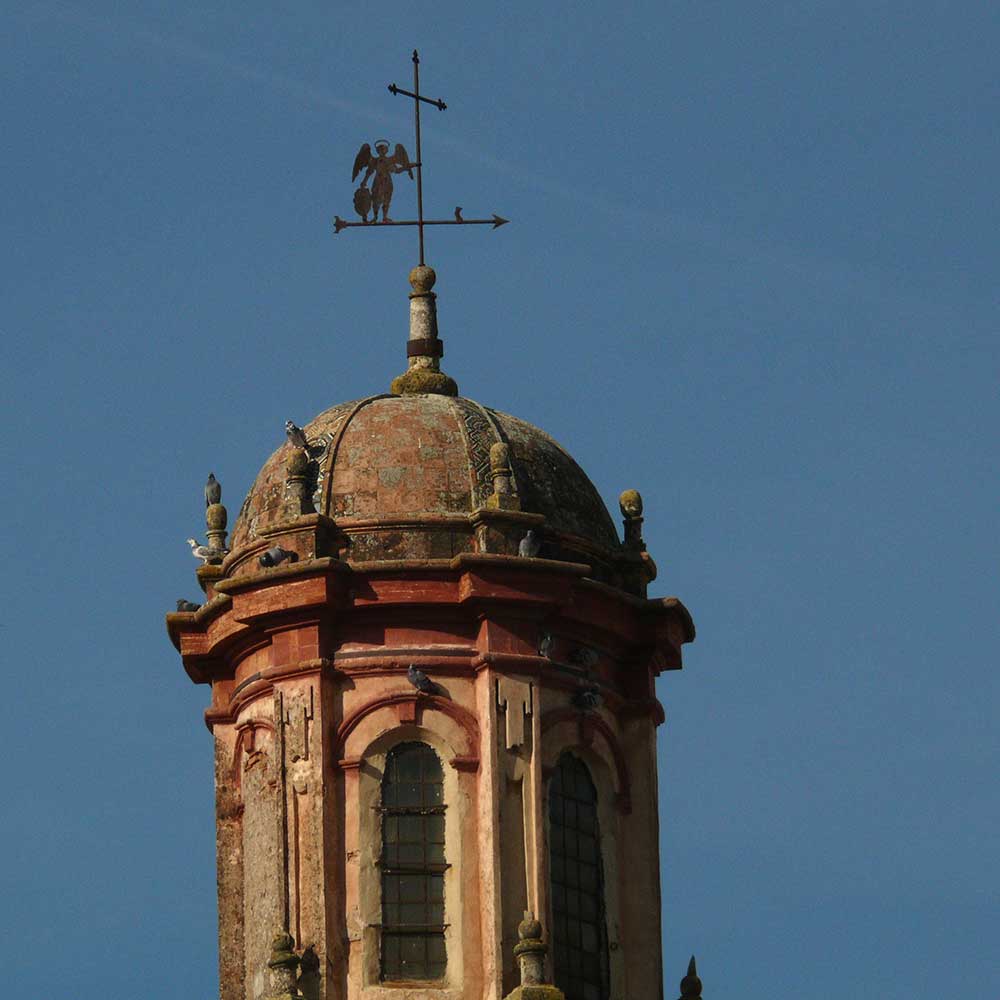
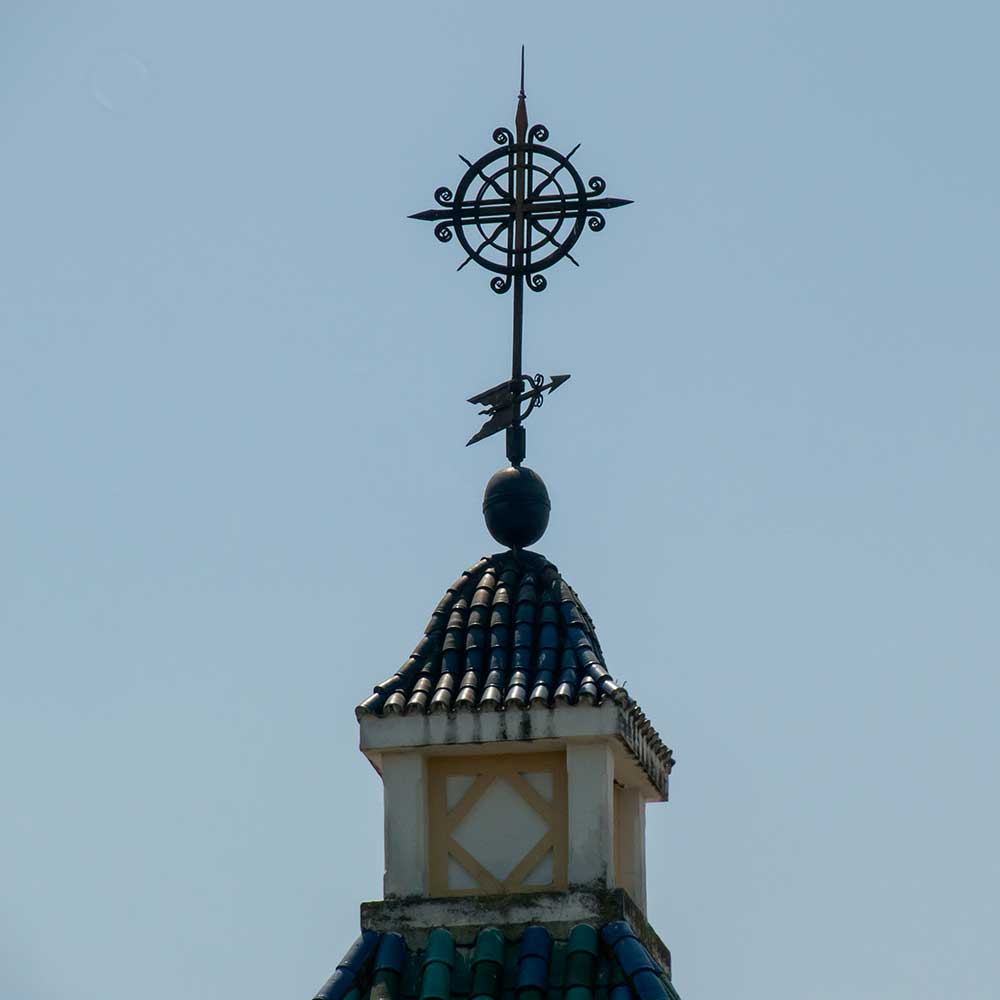
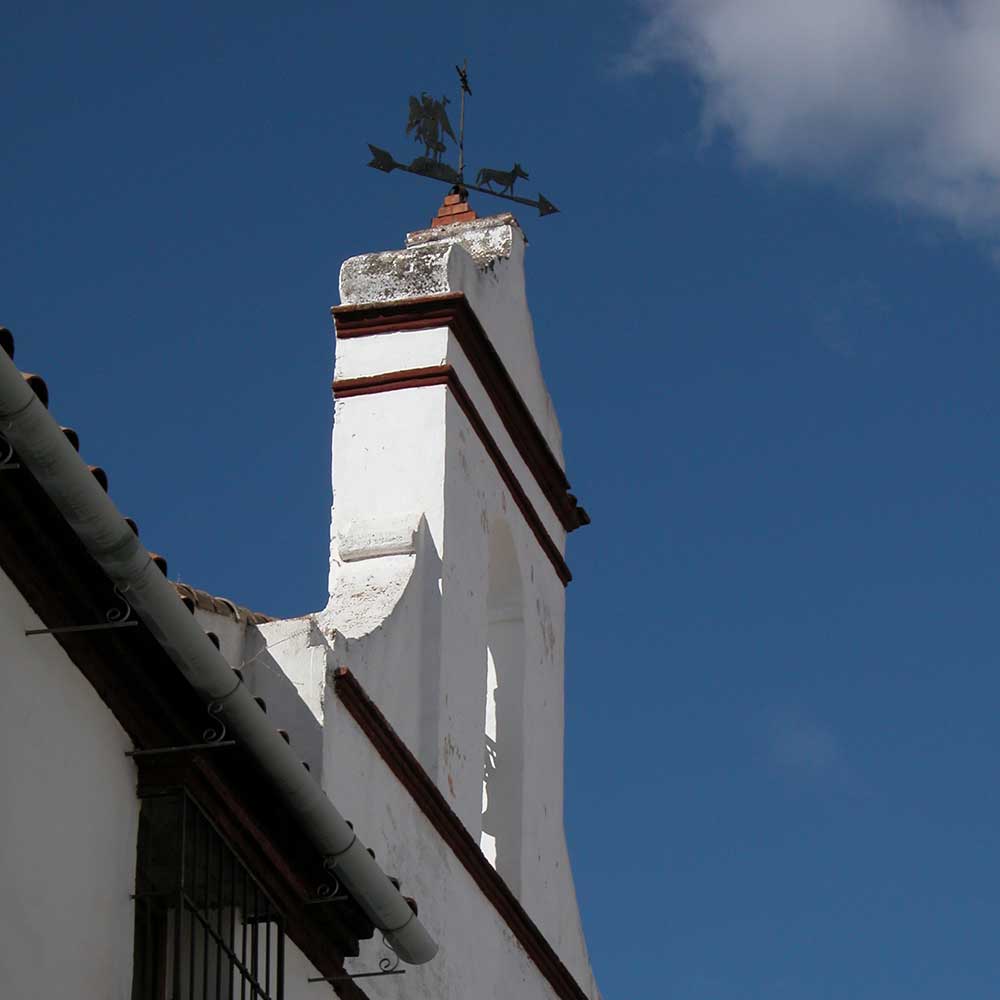
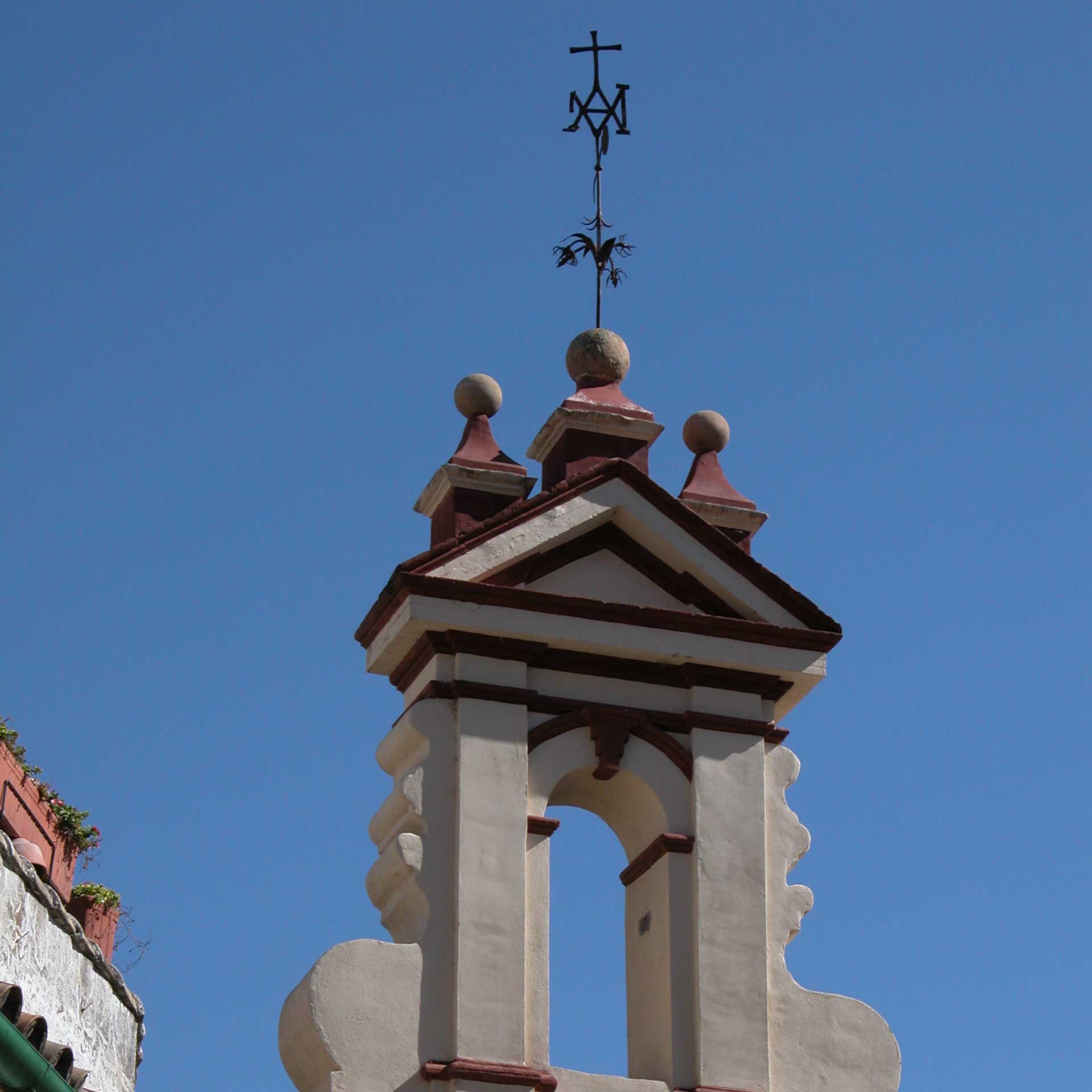
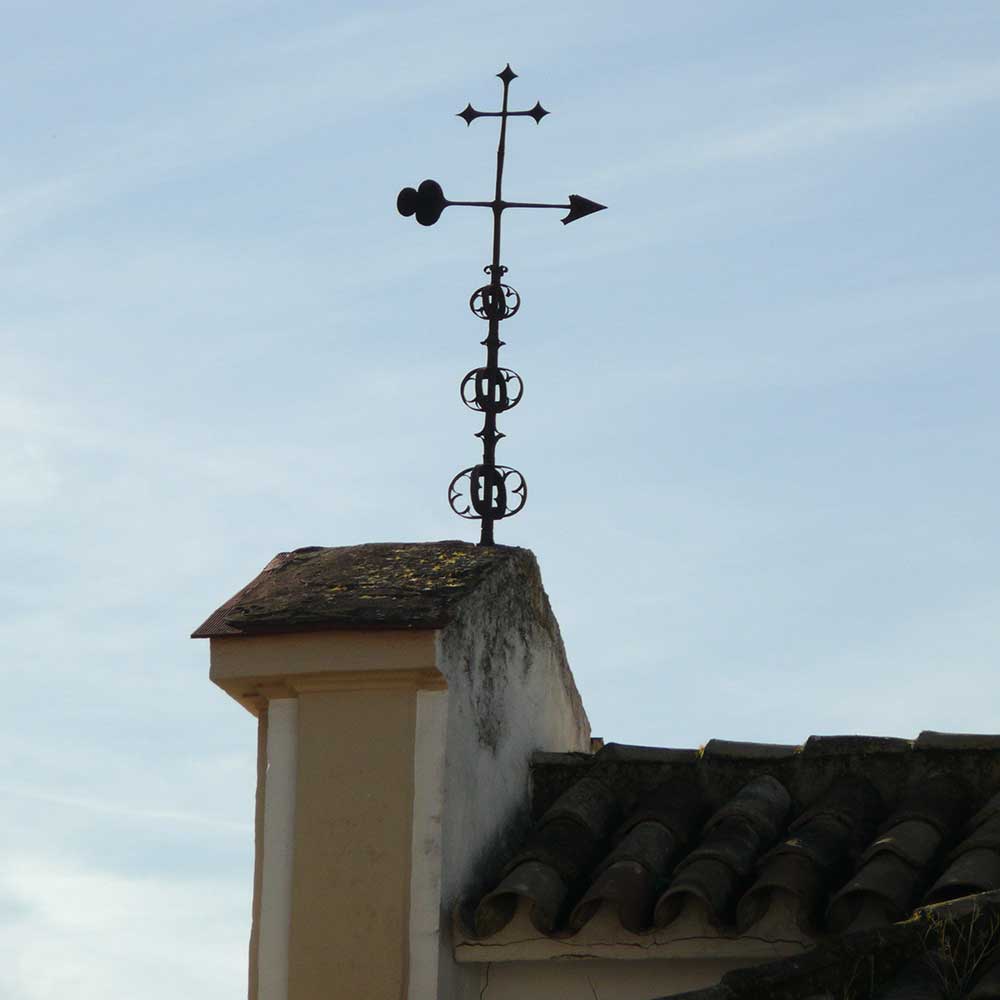
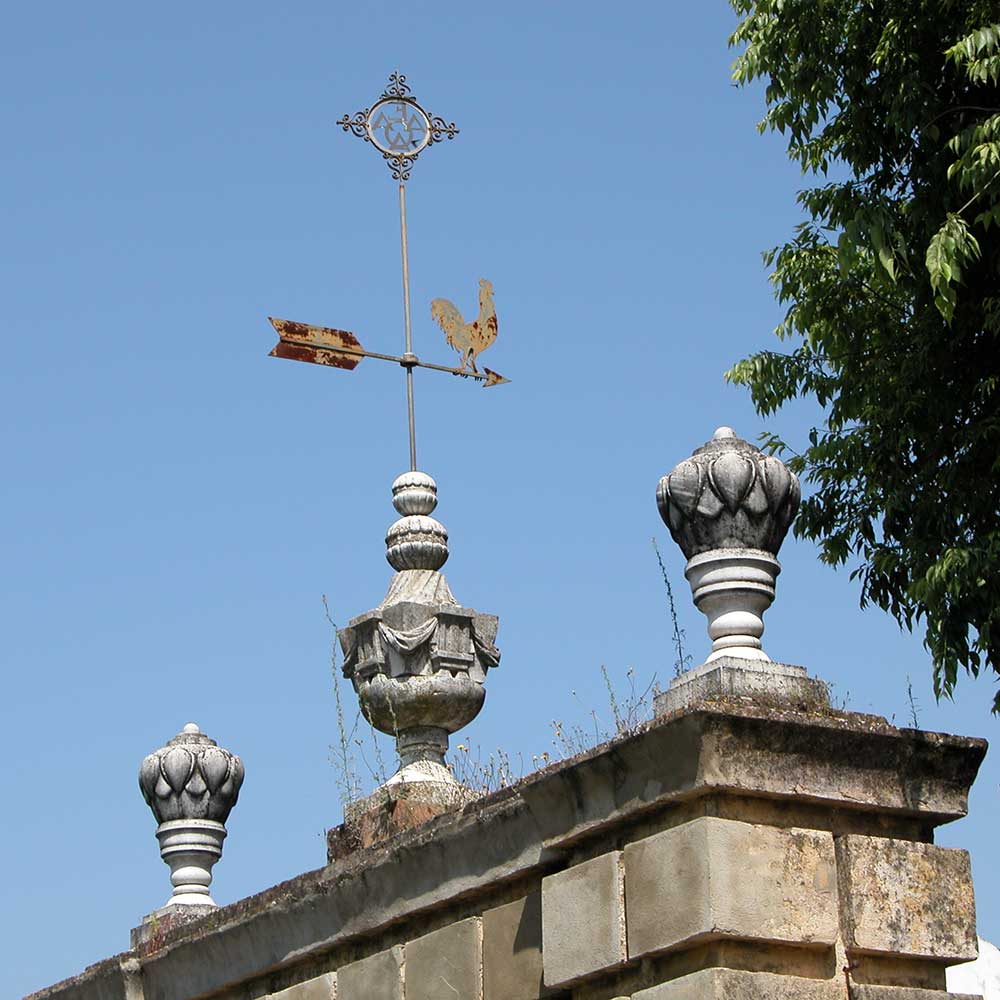
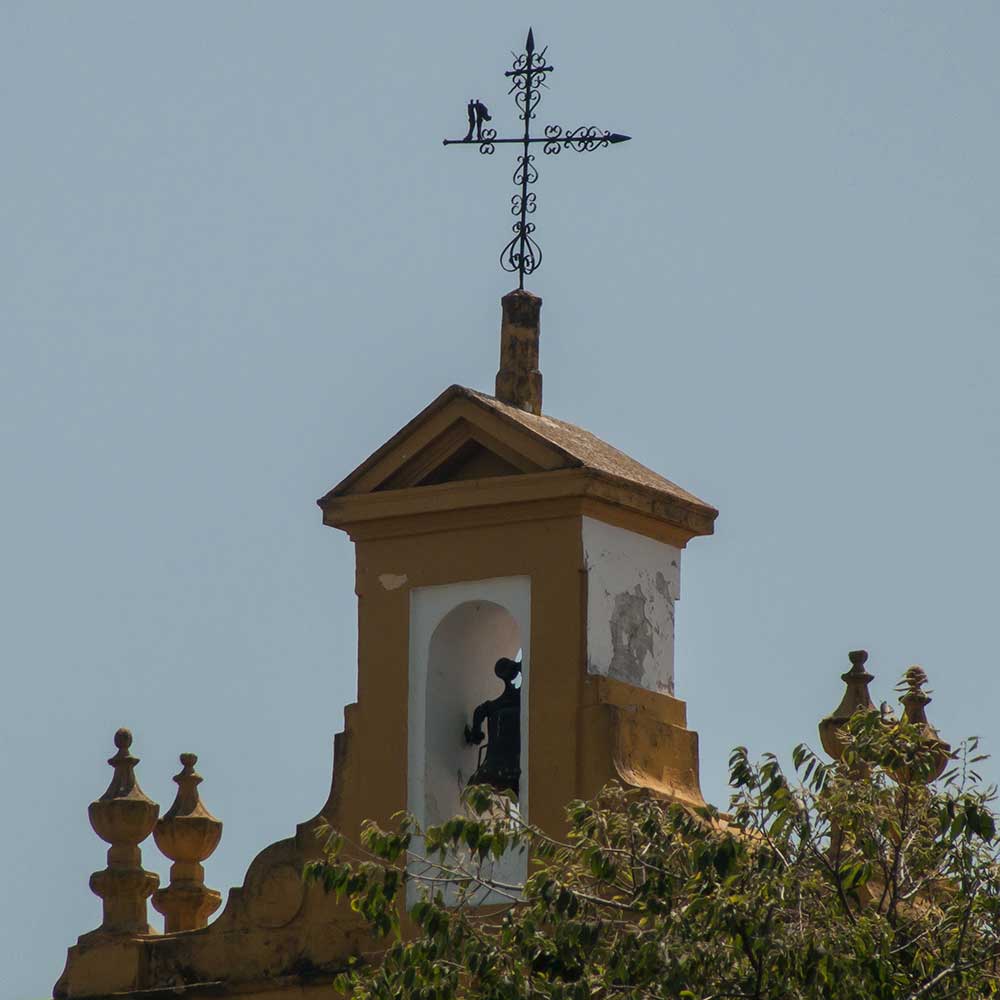
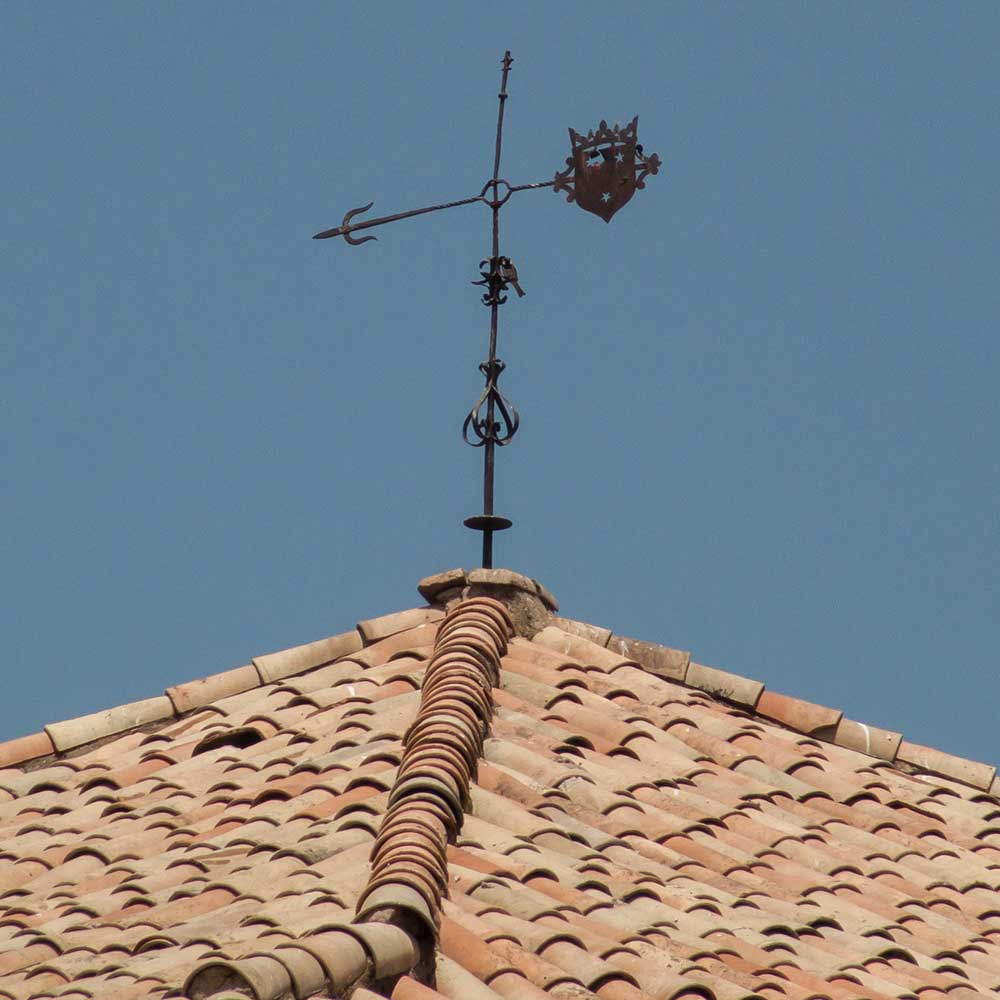
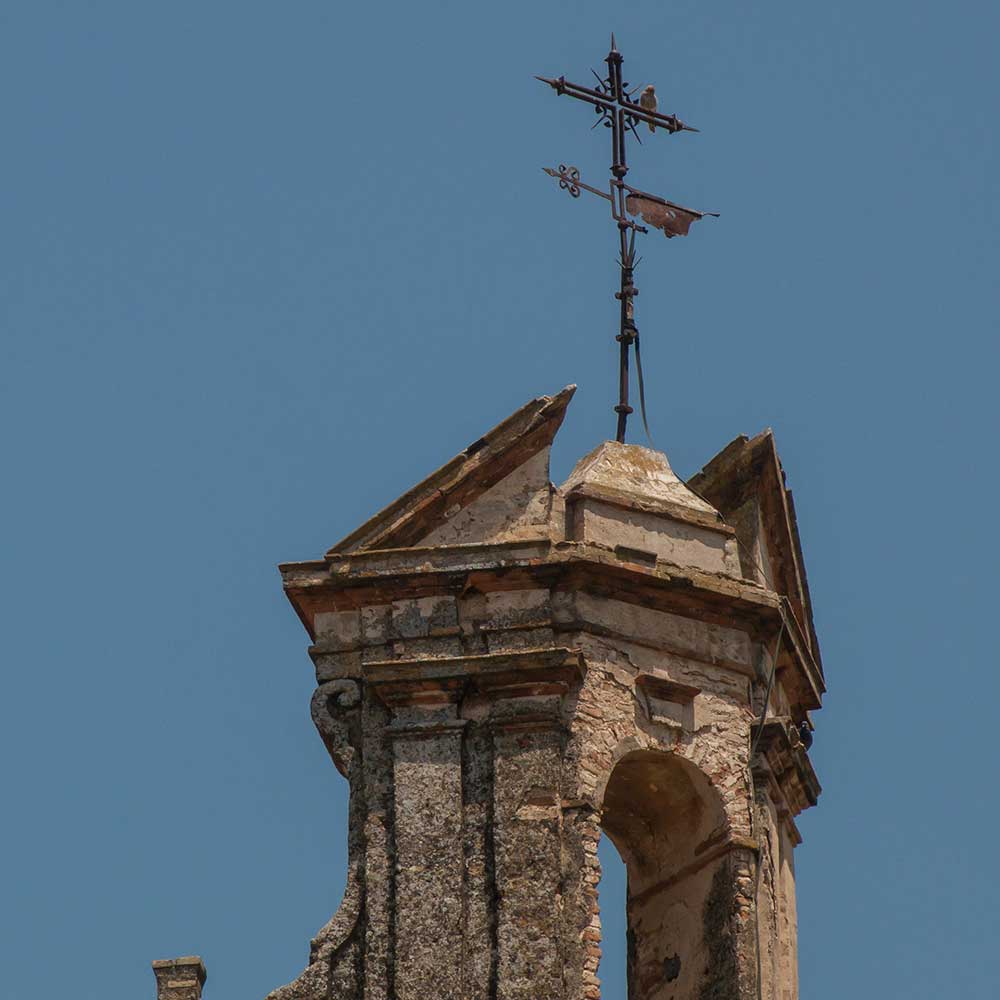
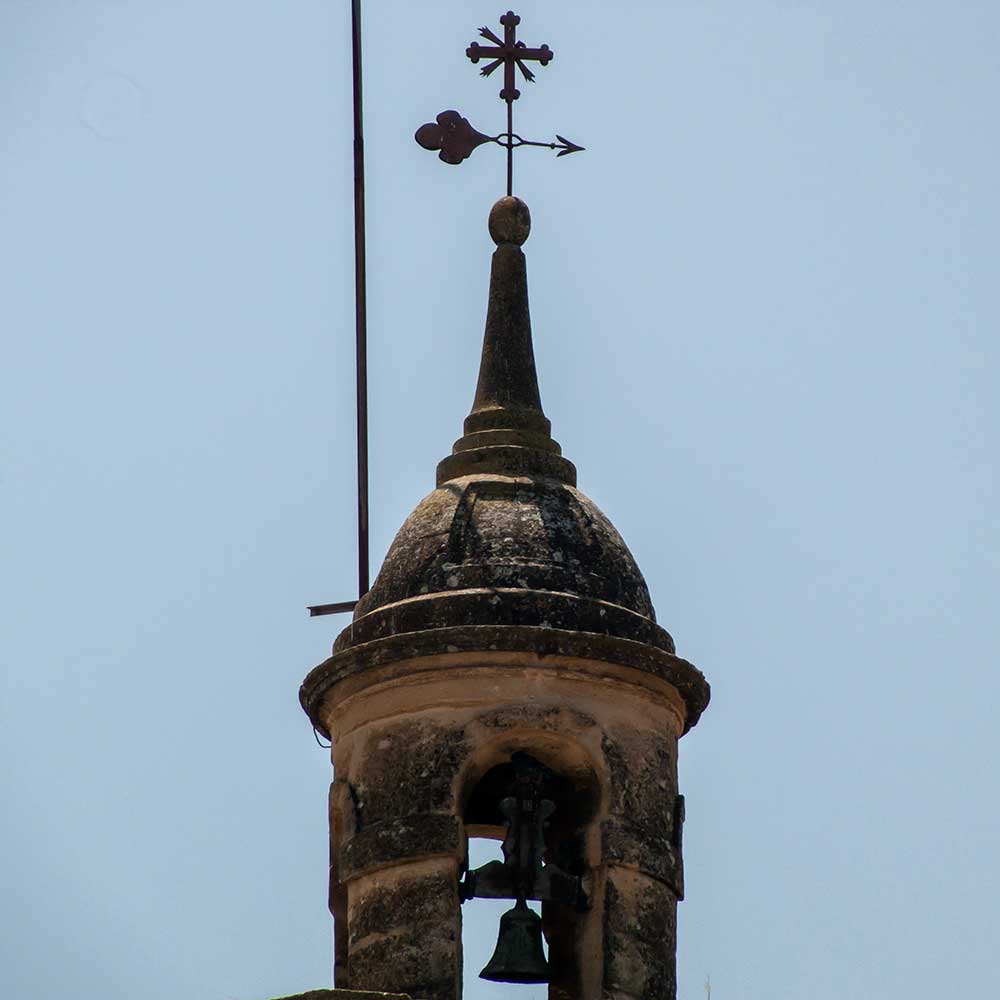
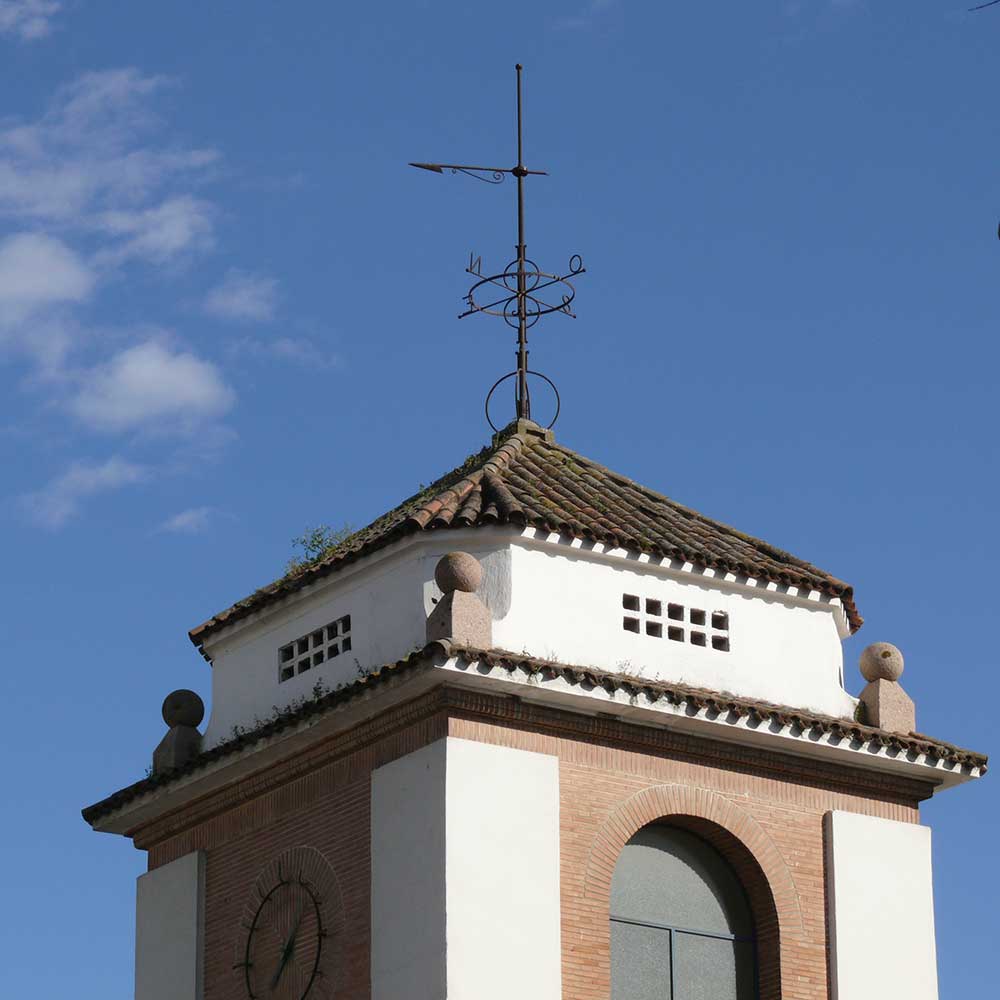

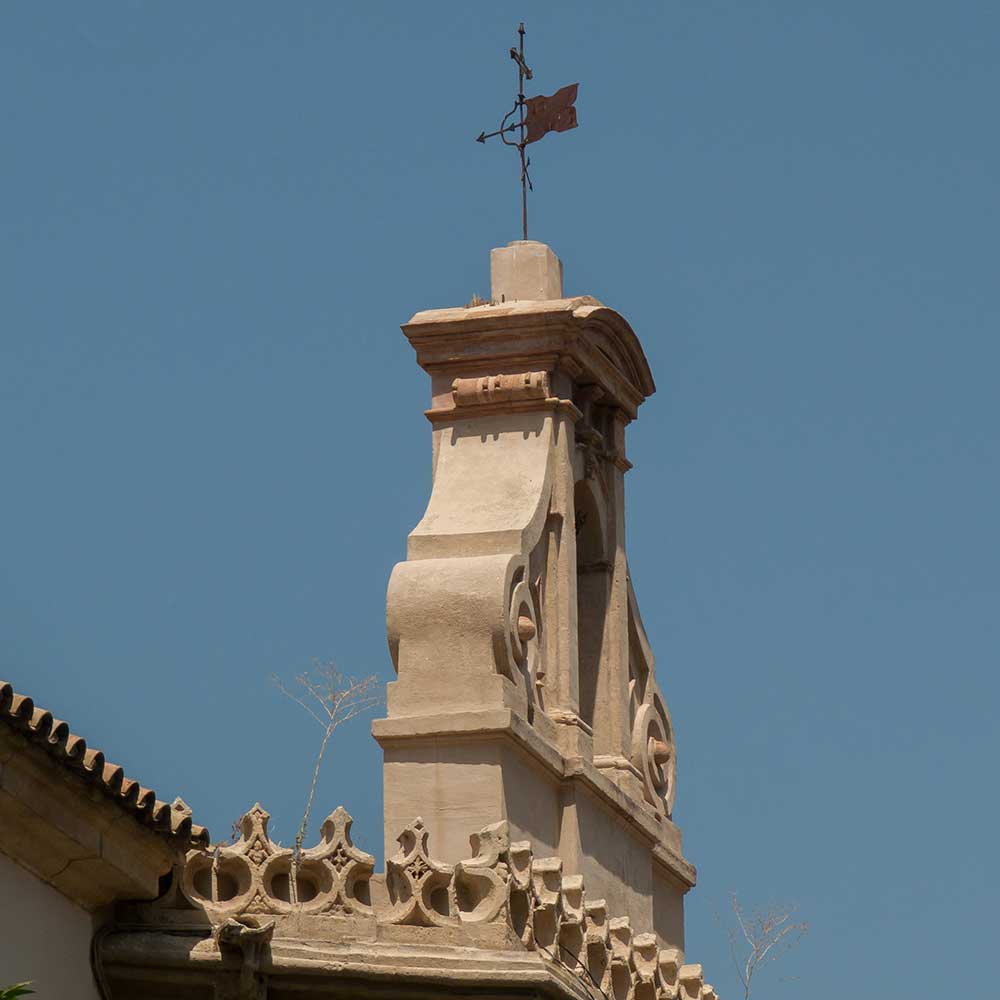
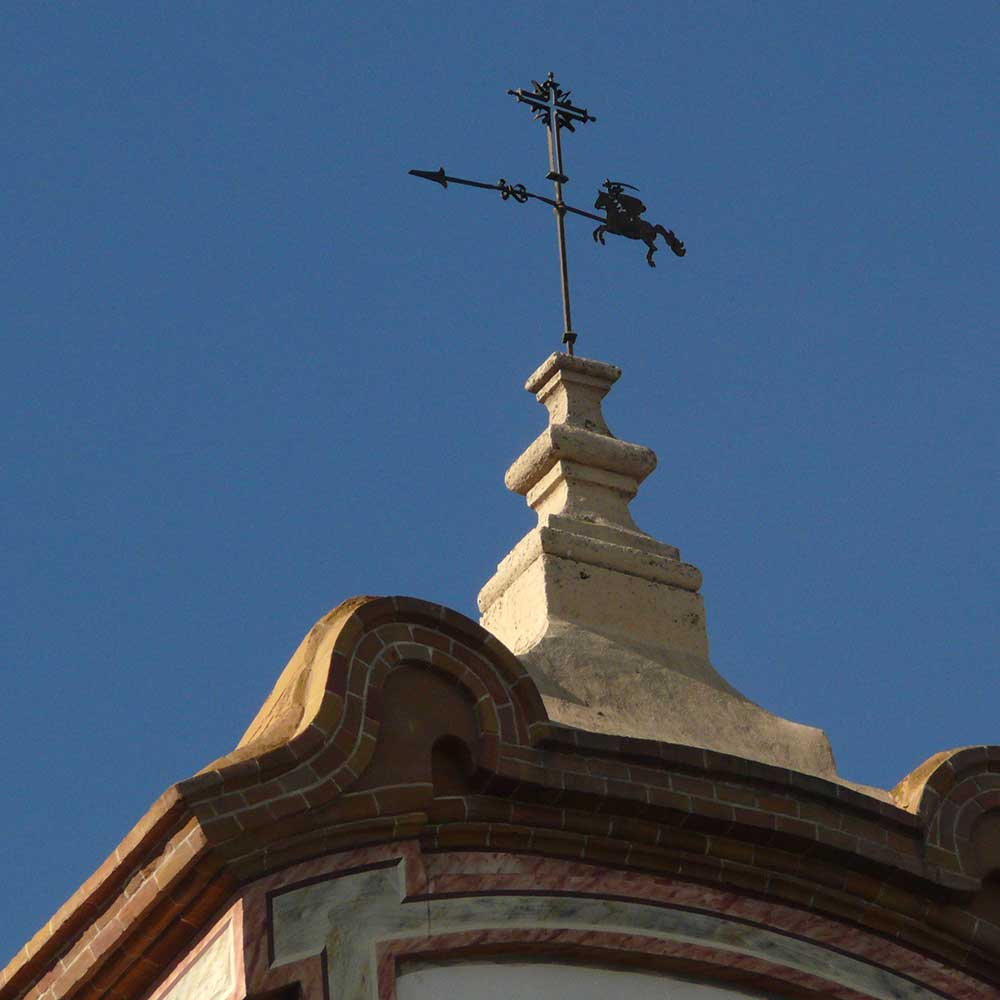

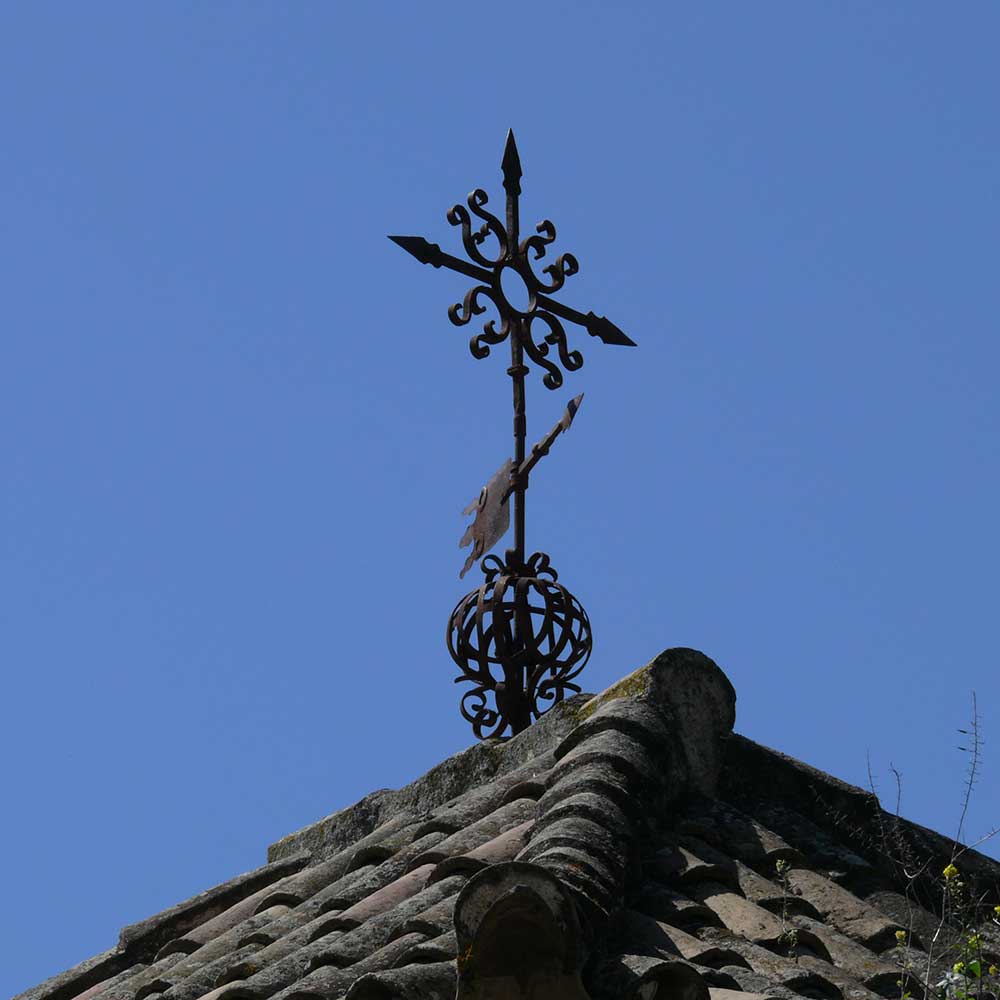
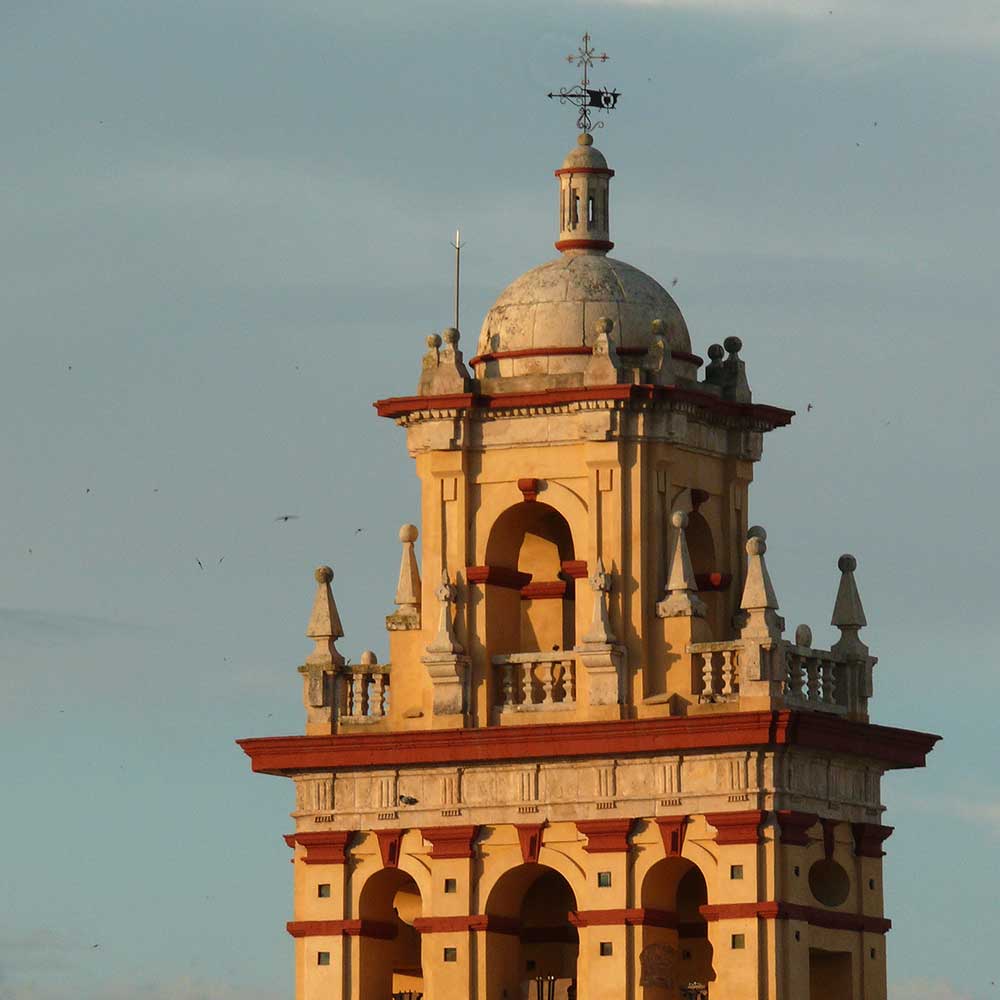
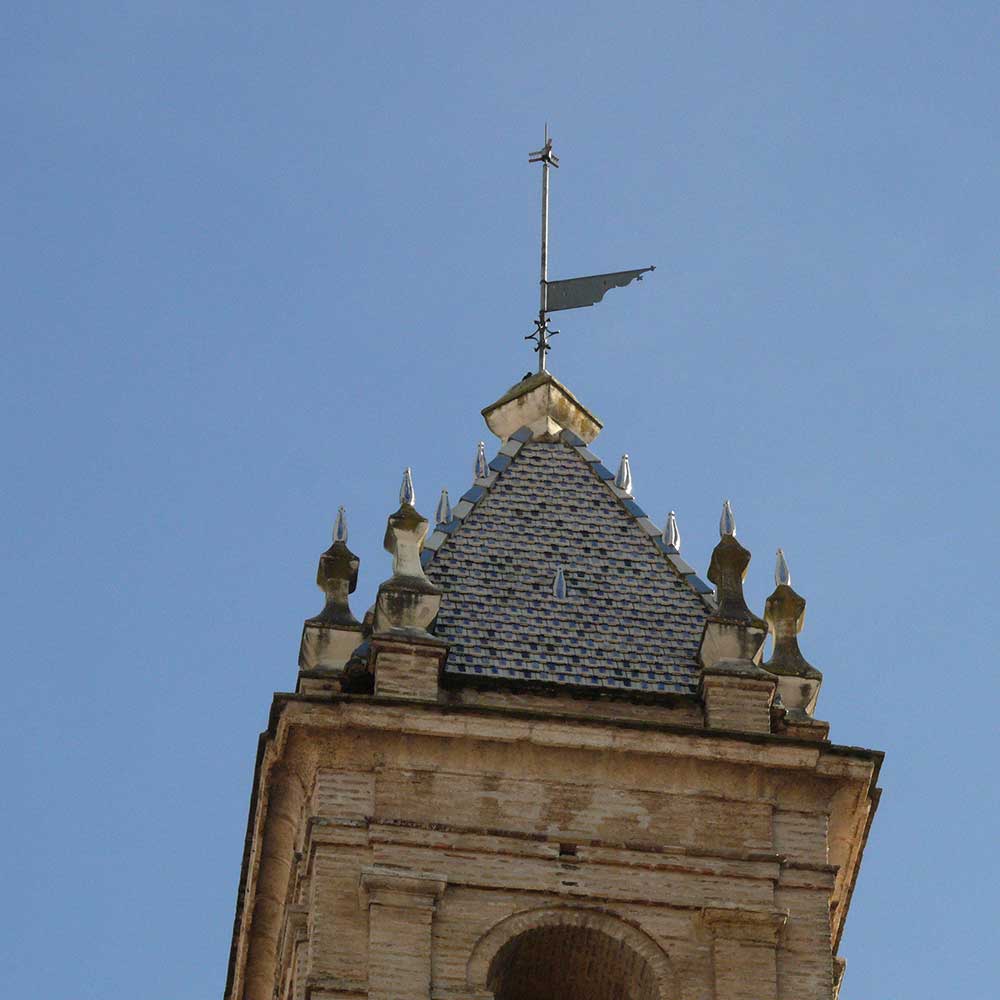
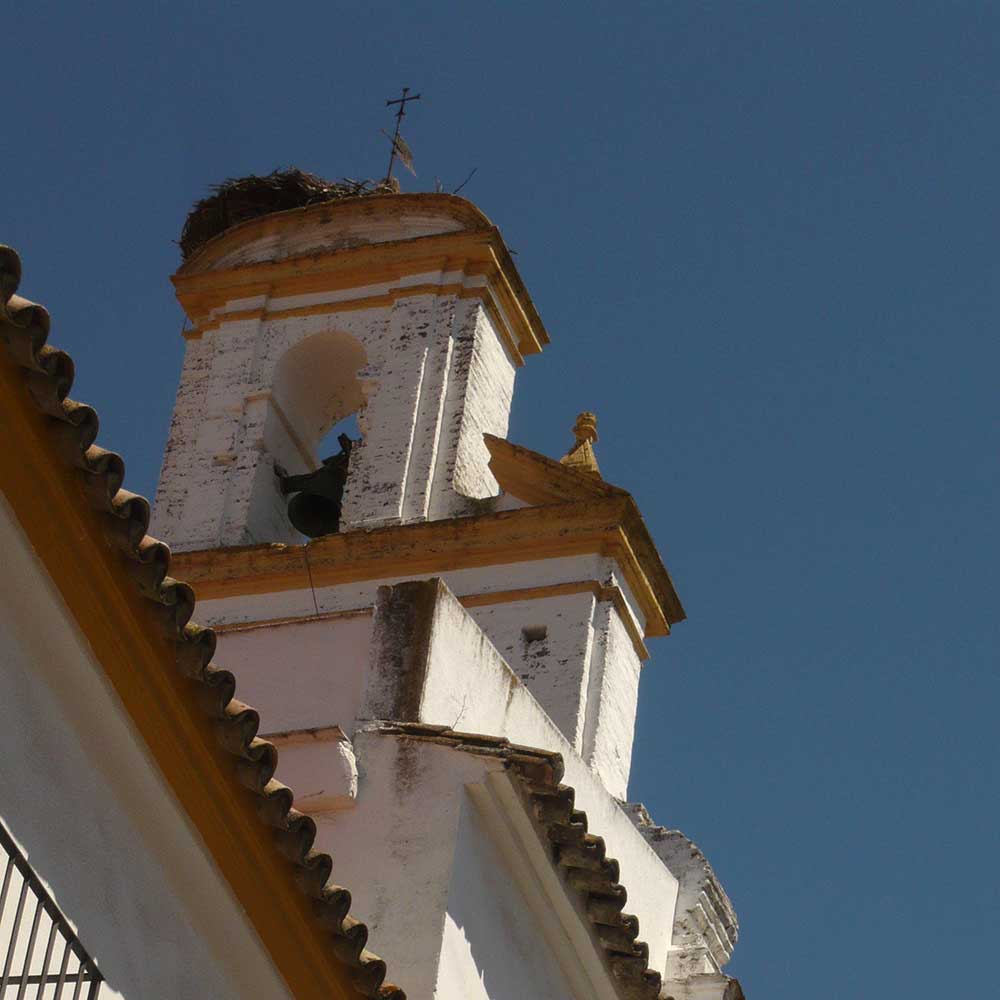

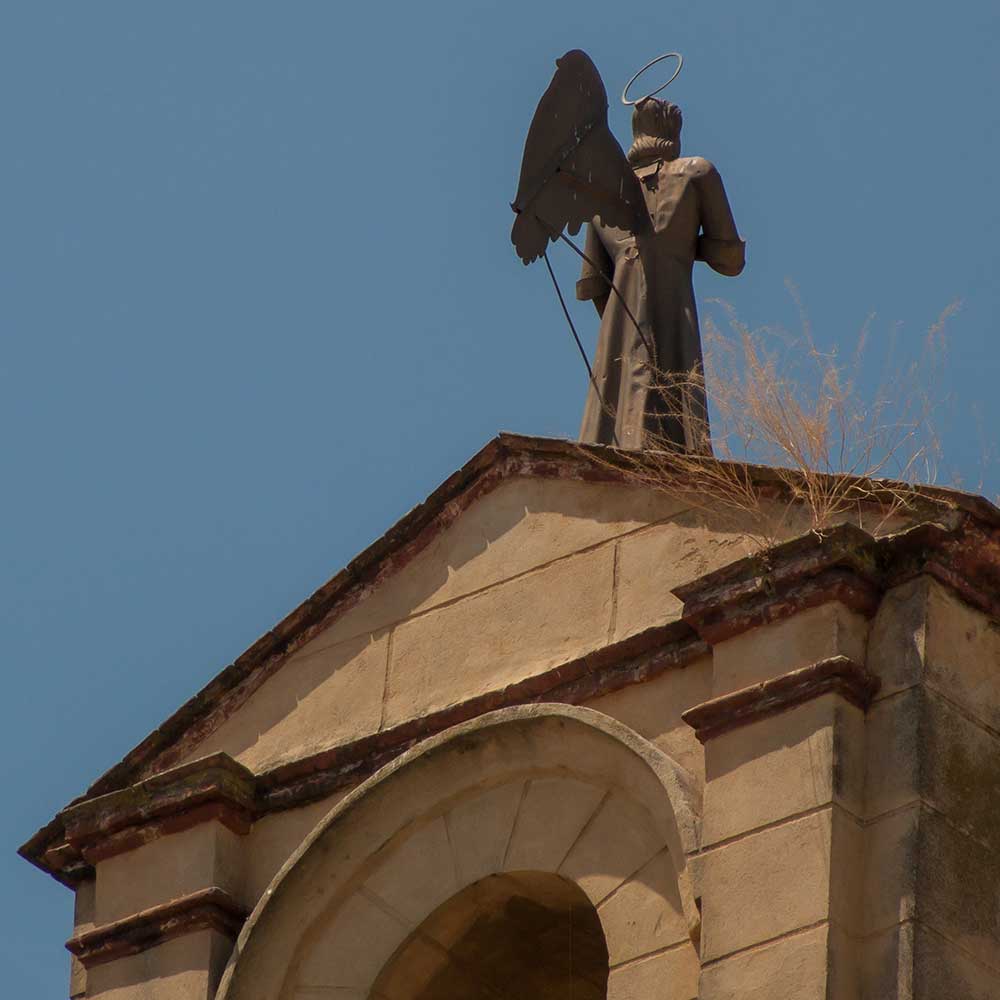
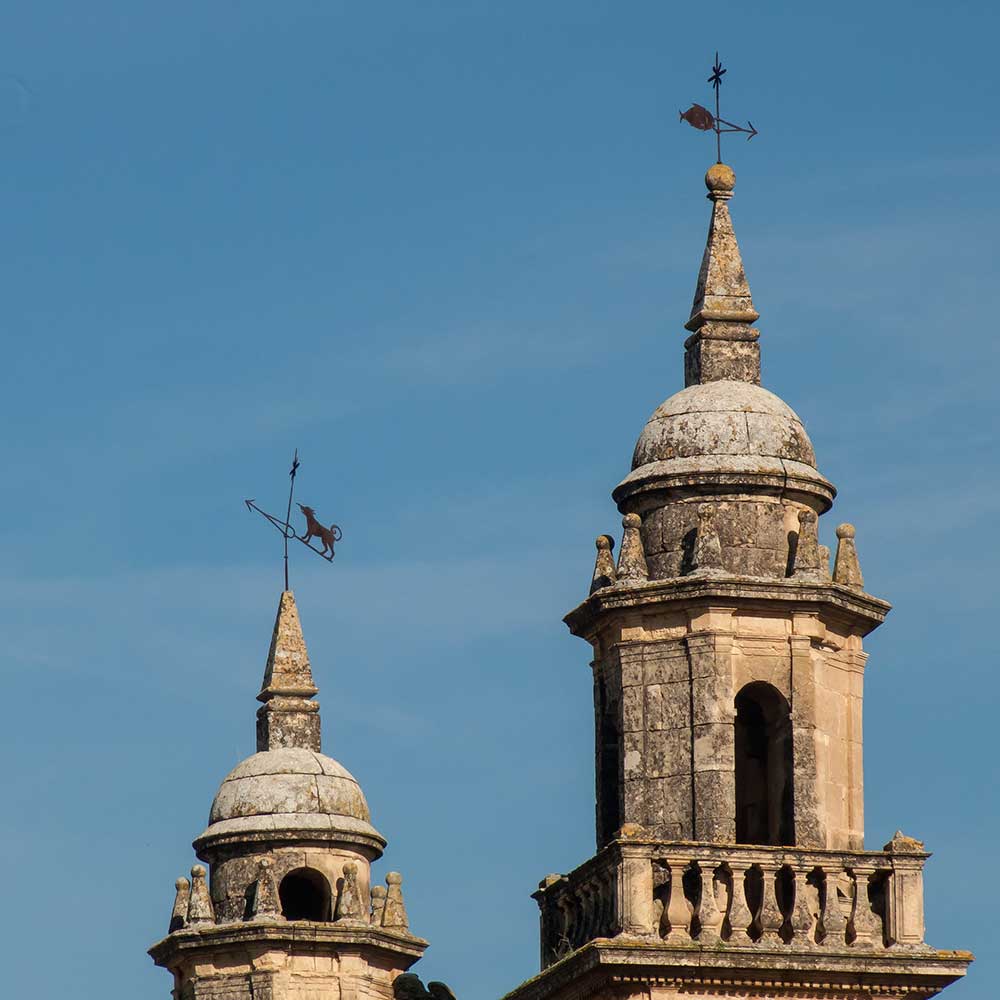
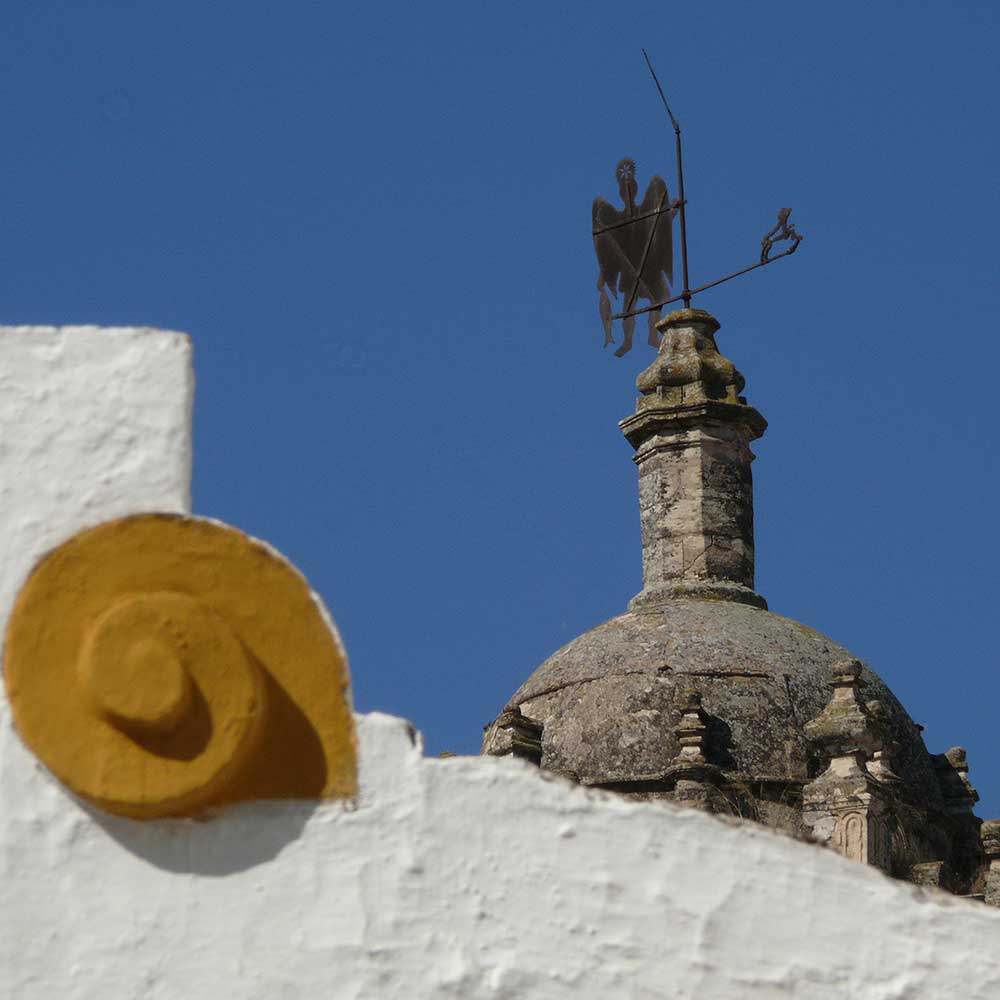
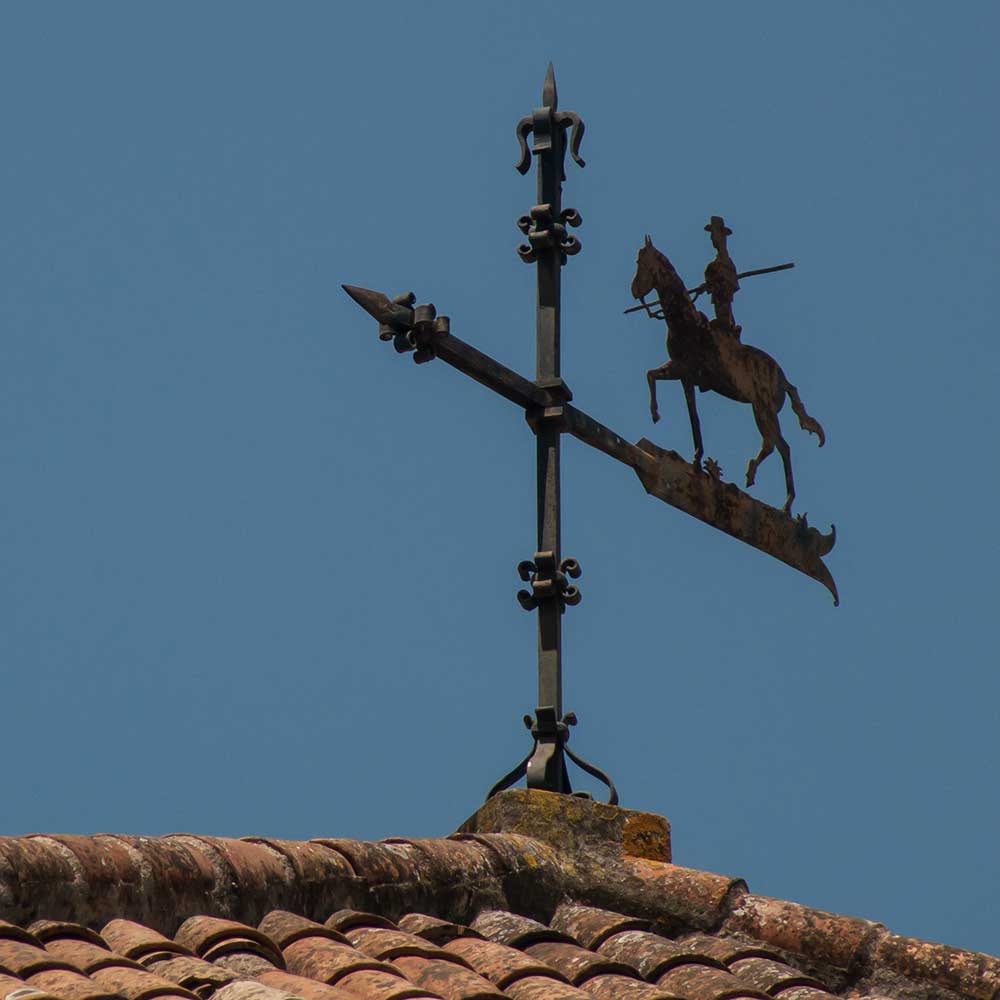
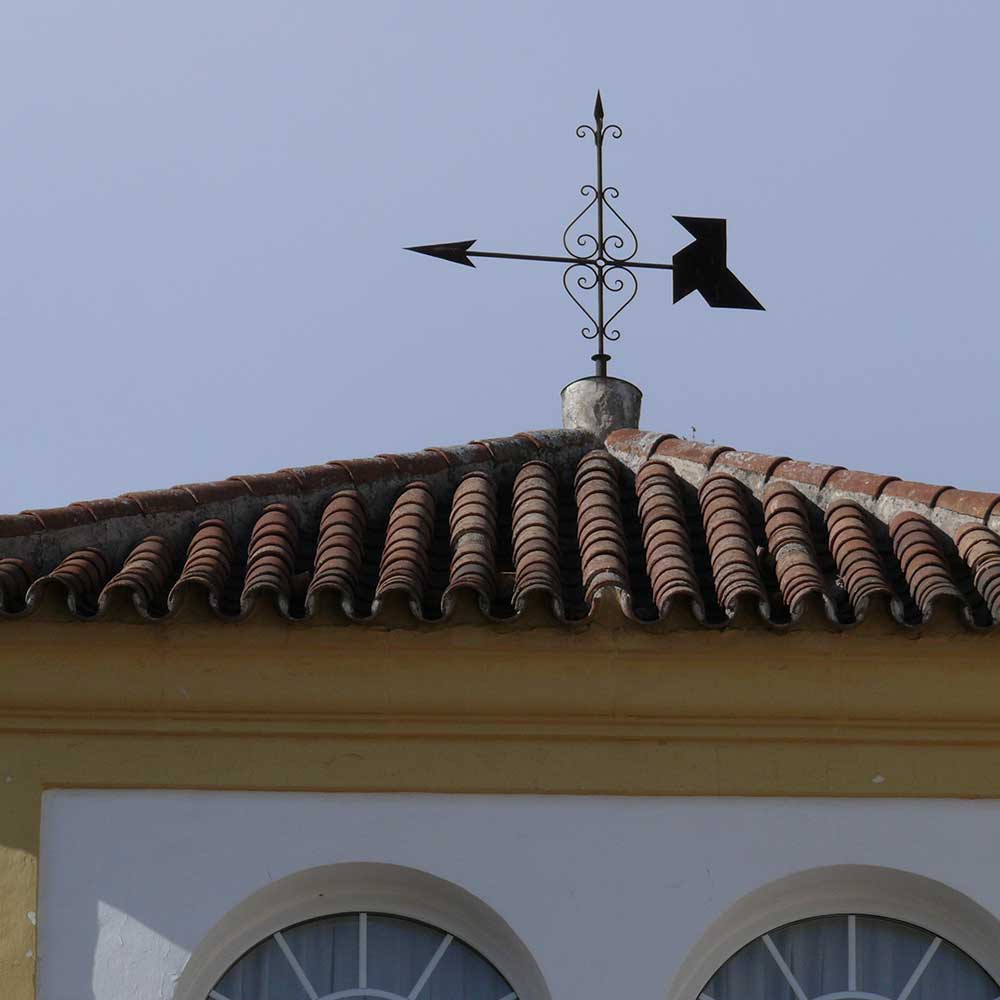
Pictures by Luis Calvo Anguís.
We find the oldest reference to a weather vane in an ancient Chinese book Huainanzi, written around 139 b.C., that describes a tool to study the winds. Almost as old as this first mention is the Tower of the Winds, that goes also by the name of Horologion, in the old Hellenic Agora of Athens; it is the oldest weathercock in Europe
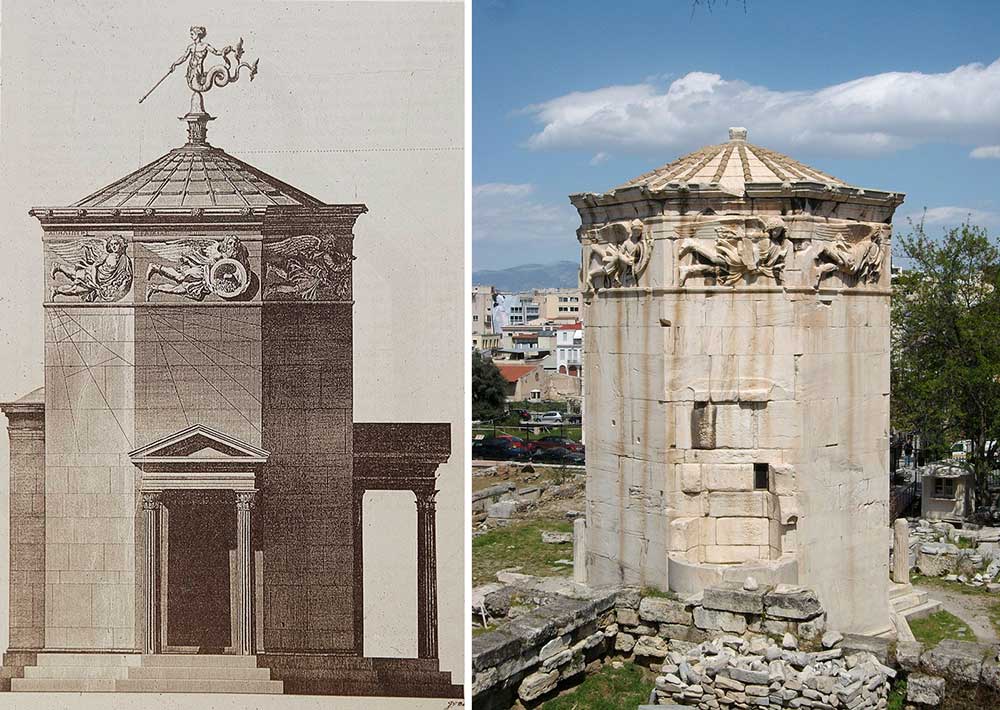
Recreation and current state of the Horologion in Athens.
The Horologion is an octagonal tower made in marble that had at the top a weather vane with a bronze Triton holding a stick that would shift position depending on the wind. Under the god there is a frieze garnished with eight Greek gods of the wind. The construction is eight meters high and had eight sundials and a water clock (a Klepsidra) inside. It dates from 50 b.C.
“Ramperto the Rooster”, as of today at the Museum of Santa Giulia of Brescia (Italy), is the oldest weather vane with the shape of a rooster in the world. Why a rooster? Pope Leon IV had a rooster crowning the Saint Peter Basilica, back then Constantiniano’s Basilica. Later on, Pope Gregorio I said that the rooster was the most suitable symbol to represent the Christian world. There is, of course, a reference to this animal in the Bible, Lucas 22:34, in which Jesus foresees that Peter will deny him three times before the rooster crows. As a result, the rooster begun being used as a weather vane at the top of tower bells. Also Pope Nicholas I ordered in the IXth century that every church must had a rooster as weather vane.
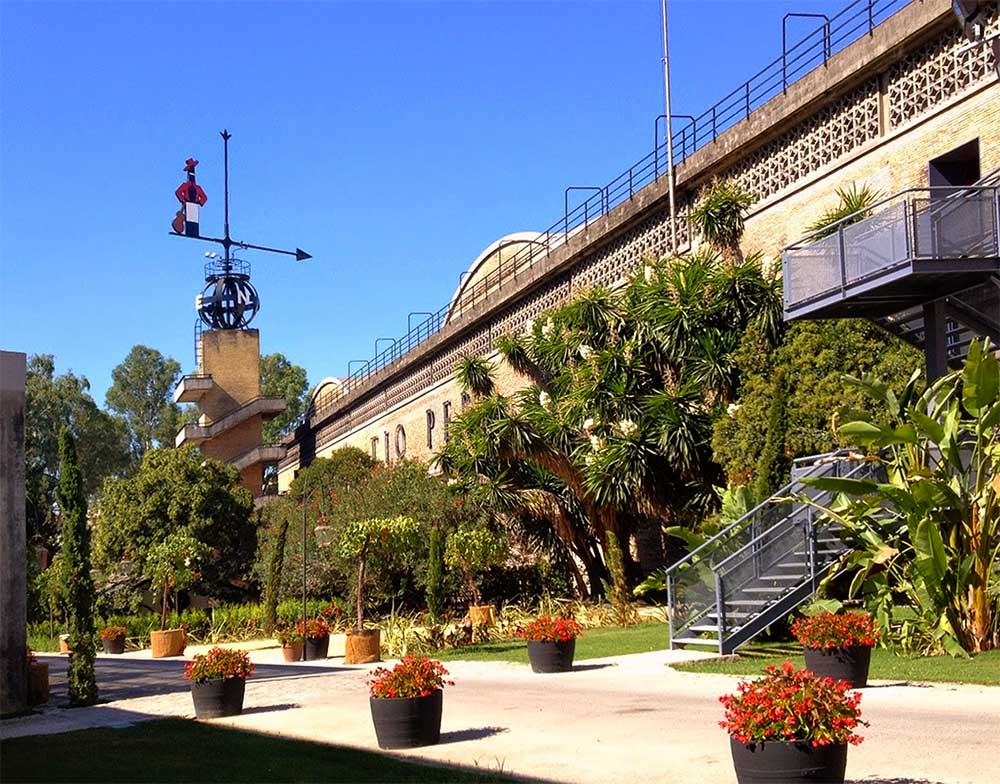
Last but no least. Did you know that the biggest weathercock in the world is in Jerez (Cádiz) and has the shape of a Tío Pepe wine bottle? Luis Pérez Solero, its designer, was a true advertising pioneer.
By the way, if you are asking yourself whether Viento10 has a weather vane or not I shall only state that we are working on it as we speak.
